Visiting Montgomery, Alabama
This is the sign that greeted me, painted on the side of the building as I drove up to the Legacy Museum.
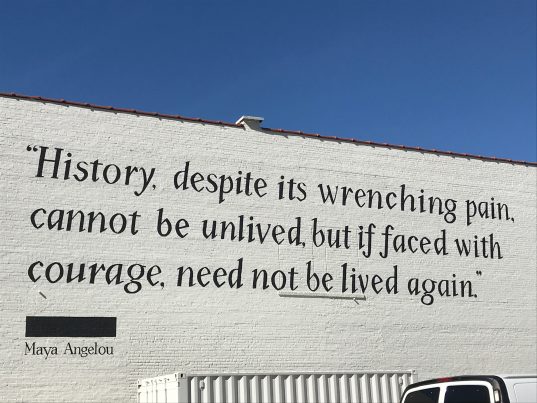
On a long winter’s weekend – before this period of “self-isolation” we all currently find ourselves in, before Ahmaud Arbery, Breanna Taylor and then George Floyd, before this momentous period of civil unrest, and after a couple of days in Pensacola, Florida, I headed north to Montgomery, Alabama – the first home of the Confederacy.
It was mixed kind of weekend getaway. Pensacola is mostly a beach town – although, as it was the first settlement by Europeans in the U.S., one visits the town center for the early American history. While Montgomery is mostly – maybe only – a town one visits if interested in civil rights history. It wasn’t like the issue of our civil rights history didn’t come up in Pensacola, either, though. The Florida Panhandle is still the Deep South. I signed up for a local historical tour of the old town area while there. In chatting with the tour guide, my interest in history became clear to him – he liked that, but (don’t ask me how it happened) it wasn’t long before the issue of Confederate monuments and the Civil War came up. He told me that the Civil War was fought over taxes. I said, everything in this country – taxes, the electoral college, gun rights and the 2nd Amendment – they all have their roots in slavery. Thankfully, the only others on the tour were a couple from Canada. They knew where I was coming from, and I felt silent sympathy and support from them. I don’t think I could have stood a Southern couple traveling along. And thankfully the tour guide was amiable, and ended by saying “well, at least you love history, and I can see that you’re passionate about this”.
So it was from there, that I headed to Alabama, into the belly of the beast, “the coffin” as Ta-Nehisi Coates calls it in his newly released novel, The Water Dancer: A Novel, which I had recently read.
There was a line stretching down the block to enter the museum when I drove by. And after wandering a while around downtown Montgomery looking for a parking space, I finally made it there by mid-afternoon. The area is a somewhat jarring mix of civil rights monuments (the Dexter Avenue Baptist Church, the Southern Poverty Law Center’s Civil Rights Monument designed by Maya Lin, the Rosa Parks Museum) right alongside Alabama state office buildings and ever present reminders of its Confederacy past.
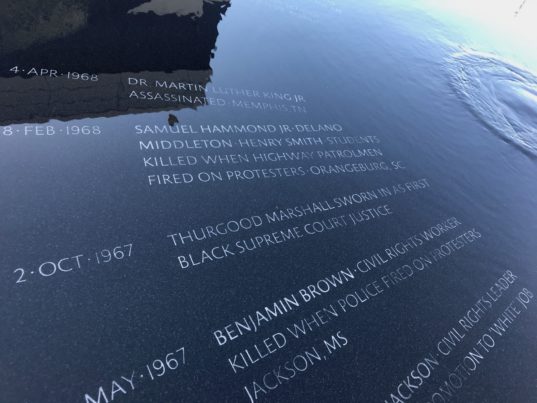
I decided after being told tickets to the museum had to be purchased at the National Memorial for Peace and Justice, commonly referred to as the lynching memorial (The Legacy Museum and the Memorial are two parts of the museum at separate locations a few blocks from each other), and that there was good chance I wouldn’t get into the museum that afternoon, I decided to go to my hotel and try again early Sunday morning. It was a drizzly morning, as I drove through Montgomery, trying my best to follow the GPS, when there – I saw them in the distance, peeking through the houses of the nondescript neighborhood. The long steel bookmarks, of sorts, hanging, bearing the names of lynching victims.
I was fortunate to have much of the place to myself, although there were a few others touring the monument. I was heartened to see that their were perhaps more white people than black there, and especially heartened to see a young white father with his 4 children – one young enough that he was carrying her in his arms, while 2 of them were pre-teens.
From there it was on to the museum, which was, in fact, fairly well populated, but quite manageable. I didn’t even know about the museum when I embarked upon this trip. I had only intended to see the Peace and Justice Memorial, but as museums go, it was quite an interesting one (that’s especially a good thing when one knows a good bit about the subject already) – and a good combination of both ”flat” and interactive exhibits.
I had no way of knowing what was coming in the next few months, although I had predicted it several years before, and wondered why it took so long to arrive at the moment we find ourselves in now. I am grateful, in a way, to have had this trip to lead me into it.
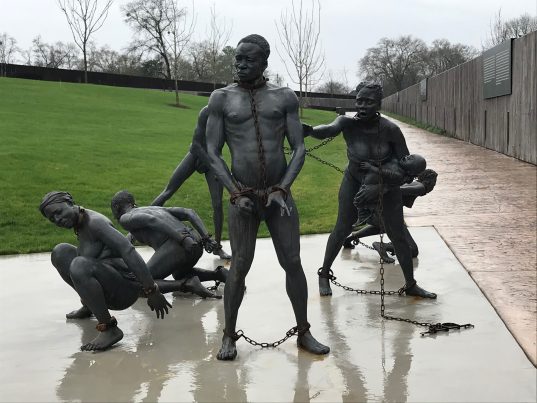
We will remember…
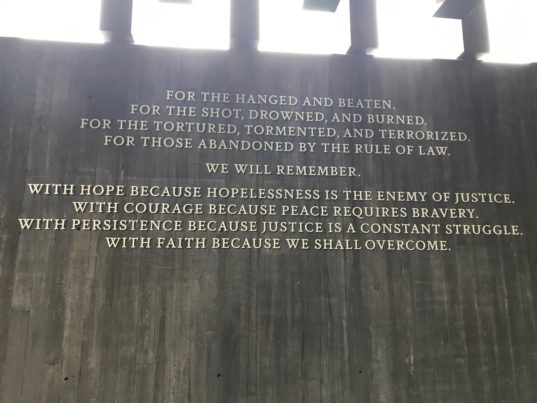
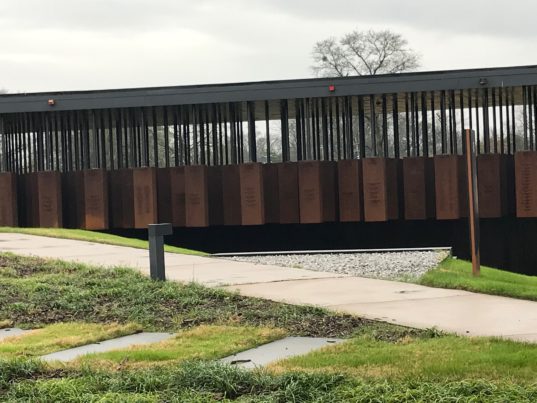
From my own home town:
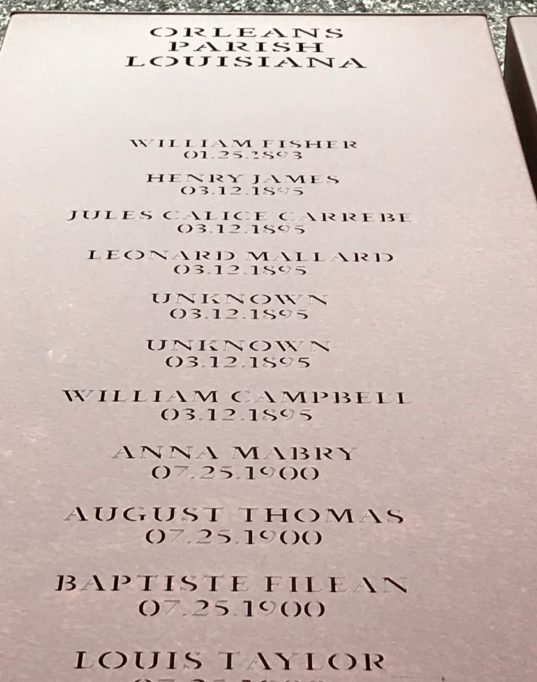
It wasn’t just in the South:
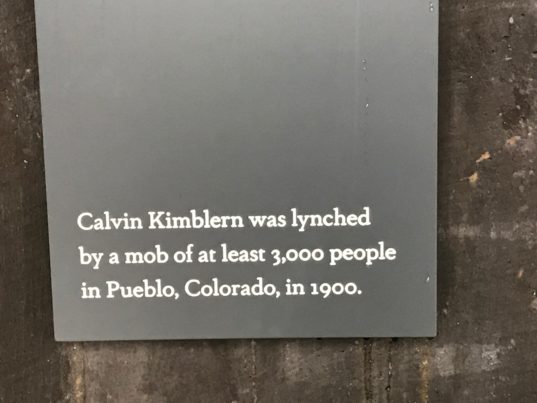
Soil is saved from lynching sites:
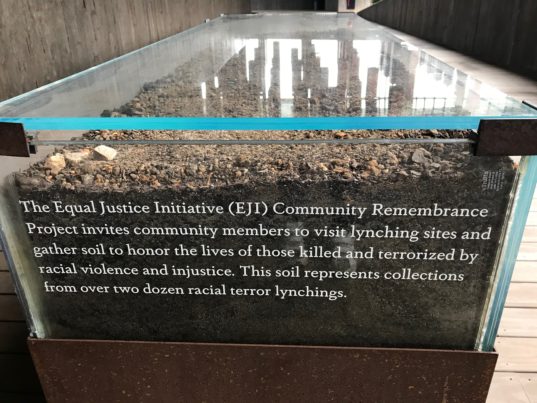
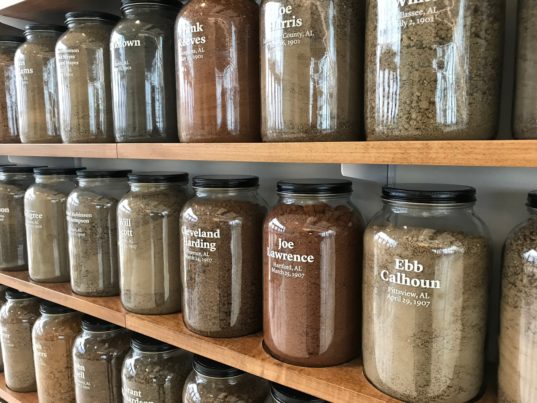
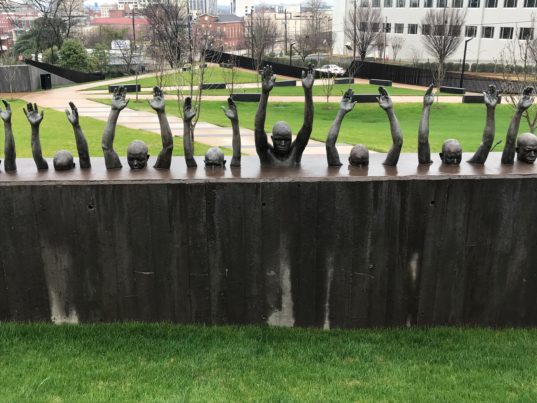







4 Comments
Very moving and informative, Gisele. Please keep up the blog. You are a treasure.
July 11, 2020
Thanks so much, Diane!
July 21, 2020
I’ve always known you’ve had a “voice”. A strong voice. So I won’t say with this post you’ve found your voice. But what you say and how you are saying it is truly authentic and appreciated. Now more than ever. GREG
July 11, 2020
Thanks so much, Greg. Yes, this pandemic shut down has brought me back to blogging after this long absence, and I am finding I DO have things to say.
July 11, 2020